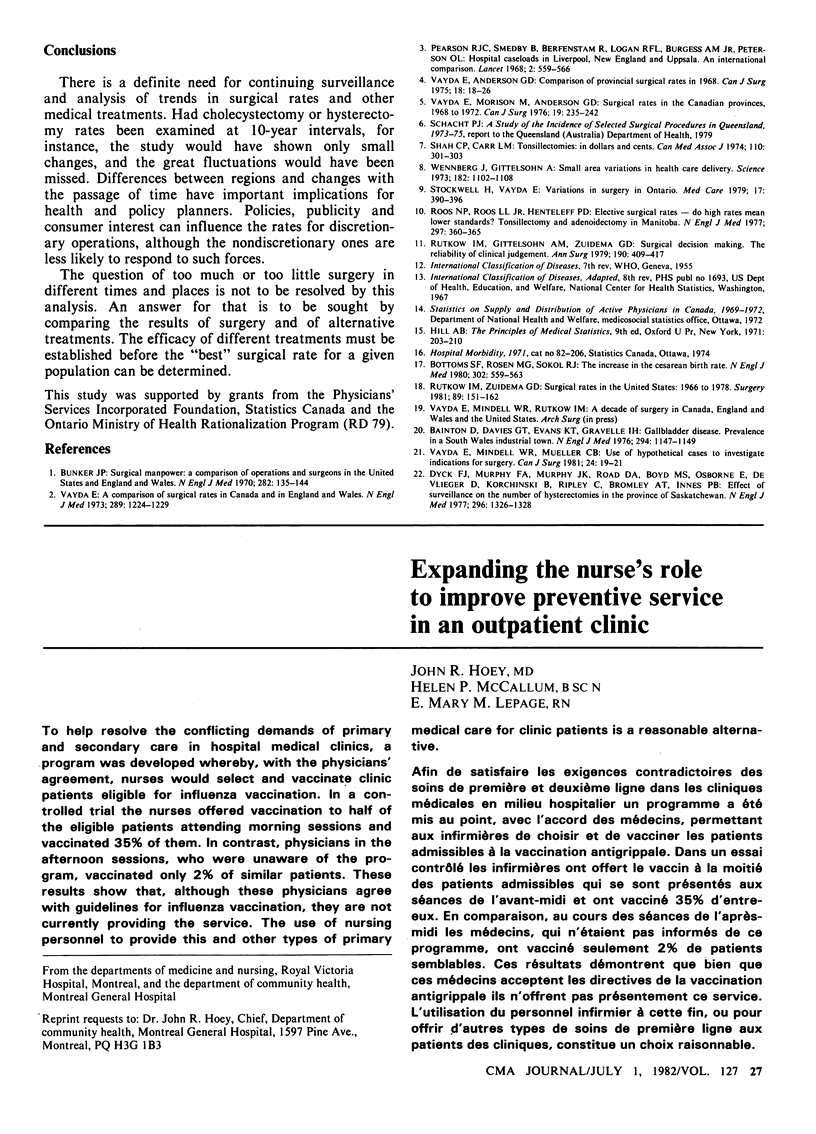Abstract
To help resolve the conflicting demands of primary and secondary care in hospital medical clinics, a program was developed whereby, with the physicians' agreement, nurses would select and vaccinate clinic patients eligible for influenza vaccination. In a controlled trial the nurses offered vaccination to half of the eligible patients attending morning sessions and vaccinated 35% of them. In contrast, physicians in the afternoon sessions, who were unaware of the program, vaccinated only 2% of similar patients. These results show that, although these physicians agree with guidelines for influenza vaccination, they are not currently providing the service. The use of nursing personnel to provide this and other types of primary medical care for clinic patients is a reasonable alternative.
Full text
PDF

Selected References
These references are in PubMed. This may not be the complete list of references from this article.
- Fletcher R. H., Fletcher S. W. The Medical Polyclinic: an approach to conflicting needs in a teaching hospital. J Med Educ. 1976 Aug;51(8):634–643. [PubMed] [Google Scholar]
- Fletcher S. W., Fletcher R. H., Pappius E. M., Rudd R. A teaching hospital medical clinic: secondary rather than primary care. J Med Educ. 1979 May;54(5):384–391. [PubMed] [Google Scholar]
- Rubin A. L., David D. S., Stenzel K. H. Sounding board: Effective primary care by the subspecialty center. N Engl J Med. 1975 Sep 18;293(12):607–609. doi: 10.1056/NEJM197509182931211. [DOI] [PubMed] [Google Scholar]
- Rudd P., Carrier A. C. Patients of internists in hospital outpatient departments and in private practice. Can Med Assoc J. 1978 Oct 21;119(8):891–895. [PMC free article] [PubMed] [Google Scholar]
- Steinmetz N., Hoey J. R. Hospital emergency room utilization in Montreal before and after Medicare: the Quebec experience. Med Care. 1978 Feb;16(2):133–139. doi: 10.1097/00005650-197802000-00005. [DOI] [PubMed] [Google Scholar]


